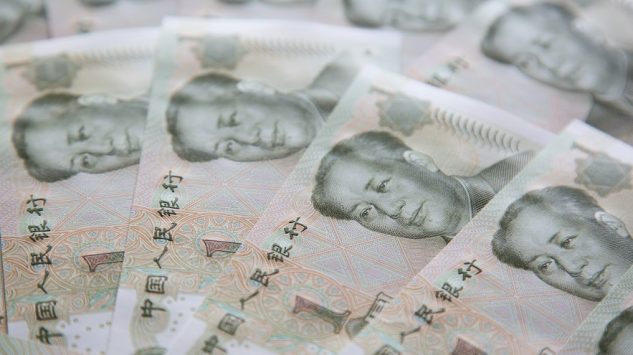Issue Briefs

Can we really understand Chinese finance?
Gabriel C. Unruh
June 21, 2017
The Chinese financial system is highly regulated and dominated by government control and intervention, in stark contrast to the mostly-private and relatively unregulated financial system in the U.S. In theory China has extensive regulatory systems in place. However, these systems are weak and not applied evenly throughout the economy. Along with The People’s Bank of China (PBOC), the central bank, four large government banks control most major financial operations in the country. These four are:
- The Bank of China – Offers commercial and personal banking services.
- The Industrial and Commercial Bank of China – Provides loans and stimulus banking, usually directed by government strategic development goals.
- The China Construction Bank – Very similar to the IDCBF. Provides loans and stimulus banking, usually directed by government strategic development goals; however, the CICHY can focus on both industrial and residential projects.
- The Agricultural Bank of China – Provides exclusive service to commercial agricultural interests in China, especially Western China.
Recent government liberalization has led to increased competition among the big four and across the financial system. More broadly, private banking in China has grown exponentially since the 1995 Commercial Bank Law, which introduced both liberalization and regulation to the financial system.
Currently, the most common types of banks in China are banks which are either foreign with some domestic ownership, or domestic with some foreign ownership (and government ownership). The largest and oldest private bank in China, the Bank of Communications Limited, is an excellent example of this joint ownership. The Ministry of Finance owns 26.53%, Hong Kong Securities Clearing owns 20.08%, and HSBC (A UK-based bank) owns 18.70%.
Current Regulatory Regime
Regulations in China are primarily enforced by the Chinese Banking Regulatory Commission (CBRC) and the PBOC. The CBRC performs financial stress tests similar to those that are performed in the United States. Still, as stated above, in China regulations are often applied unevenly based on the picking of winners and losers by the government. The PBOC acts as the lender of last resort in the country, although there is little evidence that it could provide the amount of emergency cash on the scale of incidents such as the 2008 Great Recession in the U.S. Additionally, China does not have deposit insurance for commercial or personal banking accounts with the exception of Hong Kong.
The regulators
Chinese investments and securities are regulated by two main bodies: The China Securities Regulatory Commission (CSRC), and the China Insurance Regulatory Commission. Both have significant regulatory control over their respective financial products, and often do not coordinate their actions. The CSRC has control over securities and futures laws and regulations, issuing, trading, settlement of securities, and listing of initial public offerings. It is the youngest of the regulatory bodies, created in 1999.
The largest challenge facing Chinese regulators is the silo structure of regulatory agencies. As the financial industry becomes more interconnected, the various regulators have struggled to properly police and manage their respective financial products.
The main area of weakness is in wealth management, as banks, trusts, and holding companies are all offering wealth management products, while no one regulatory agency has set guidelines on these products. Without coordination, this has hurt China’s ability to mitigate risks in the financial sector.
Serious Risks for the Chinese Financial Sector
The three major risks to the Chinese financial sector today are the shadow banking sector, the potential housing bubble, and slowing economic growth.
The shadow banking sector in China is mainly credit intermediation involving businesses and activities outside the regulated banking system. It rose to prominence after the 2008 Great Recession, when the Chinese Government was pumping massive stimulus into the economy to spur rapid economic growth. On one hand, the emergence of shadow banking was inevitable, as the government could not keep up with demand for loans to grow the economy. However, as the sector grows and the government exercises little control over rules and practices, it has become a systemic risk to the economy.
Large shadow banking sector
The PBOC has cited the growing importance of shadow banking as a reason for weak implementation of monetary policy. This sector also is also a potentially huge threat for middle class families who avail themselves of these institutions with no protection from failure. According to Thomson Reuters, shadow banking could represent as much as 20-41% of on-balance sheet bank lending in China. The root of the problem with the shadow banking sector is that the government has allowed it to flourish in order to meet target growth rates. However, the byproduct of shadow banking is massive systemic risks to the economy and predatory lending practices, which have hurt middle class families. The government has begun to address the opaque structures of this sector; but it appears that rather than eradicating it, they will instead chose to negotiate with large shadow institutions to bring them out of the shadows and under some level of government regulation.
Housing Bubble
The potential Housing Bubble in China may be the most internationally publicized economic risk. Exponentially increasing housing prices over the past 2 decades have resulted in families entering the real estate market as a way of turning attractive profits from accumulated housing sector assets. However, the market has grown so quickly that supply is now far outpacing demand. This has resulted in many families losing their savings in poorly planned and mostly illiquid real estate investments. 15% of Chinese GDP is now housing related, a much higher percentage than the estimated 5% from 2003- 2008 in the U.S.
An estimated 65 million flats in China sit empty. Some suggest that these flats are being purchased for 22 times the annual average household income, meaning that this market is only open to very wealthy individuals. Prices have recently begun to decline, with year-over-year declines in small cities totaling 26%. This could indicate a capitulation, or the beginning of a bursting housing bubble.
Slow growth
Slowing economic growth has both contributed to, and is an effect of the two systemic risks above. It is not that China is facing negative growth, as someone might think based on news reports. Rather China faces an unpredicted slowdown in what was incredibly high growth. This slowdown is mostly demand driven, although manufacturing is also slowing. The Purchasing Managers’ Index (PMI) has now been under 50 (contractionary) since March 2015. This data, along with reduced GDP forecasts, continue to point to China’s slowest growth year in 2 decades. Reduced liquidity, less wealth and wage growth (especially among the middle class), and decreased demand have created an economic race to the bottom with domestic and foreign companies severely suffering.
Investing in China?
As the world economy becomes more interconnected, and as investors continue to make portfolio decisions based on Chinese consumption and production, it is important that they understand the strength and depth of the Chinese financial system.
Here are the facts. Chinese equities and investments continue to be highly volatile, and should be avoided, in the short-to-mid-term. Equity losses the past year of over $2 trillion would suggest that it is possible to find value. However, systemic weaknesses, like the ones discussed above, will continue to plague public and private markets in China. Although on paper China appears to have a strong regulatory system in place, it is important to remember that these regulations are often applied through means of picking favorites. This creates additional systemic risks which are hard to predict and cannot be reduced, unless rule of law, and equal prosecution are applied throughout the country. This process could take years.
Due to the lack of predictability of Chinese markets and the unreliability of information, even information collected by U.S. “big bank” analysts, U.S. based Chinese ETFs and Funds, also continue questionable mid-term investments. By 2017, expect ETFs like iShares China Large-Cap (NYSEARCA:FXI) to test or fall further than their 1-year bottom set earlier this year. Over-borrowing and the free flow of paper money, caused specifically by shadow banking, also threaten the credit markets. Even large Chinese financial institutions like the Bank of China should be avoided by direct equity investors. Chinese bond markets face weakness from a weakening currency, a crackdown on shadow banking, and an increase in the number of credit defaults.
What to pick
Low-volatility U.S. investors should avoid Market Vectors (NYSEARCA:CBON) ETF which hold corporate bonds that share a higher risk of bankruptcy or default in the case of a credit crisis. These Chinese bond exposure ETFs have already proven to be a risky place for portfolio managers, with a similar bond ETF from Global X (NYSEARCA:CHNB) going through a scheduled liquidation earlier this month. Higher-rated portfolios (AA+) like KraneShares Chinese Commercial Paper ETF (NYSEARCA:KCNY) are still volatile but may offer more stability since the Chinese government has shown the willingness to bail out large failing corporations in the case of default or bankruptcy.
Overall, both the equity and fixed income markets face increasing volatility due to weak regulatory mechanisms and systemic economic weaknesses which have yet to fully expose themselves to the broad market. Investors need to practice caution when investing in China, as regulatory mechanisms and practices are simply unlike the U.S. and Europe. Investors often assume that China will adopt investor protections and practices that are Western-esque, but this is not the case, at least not in the immediate future. Final warning: sudden policy changes are always a risk to consider when investing in China.

Gabriel C. Unruh is a Global Policy Institute Fellow. He works as a business and geopolitical strategist and researcher at American University in Washington D.C., with special focus on international finance & trade. He was a staffer for a member of U.S. Senate leadership. Unruh is actively involved in educational and philanthropic initiatives at the higher education level.
The views and opinions expressed in this issue brief are those of the authors and do not necessarily reflect the official policy of GPI.